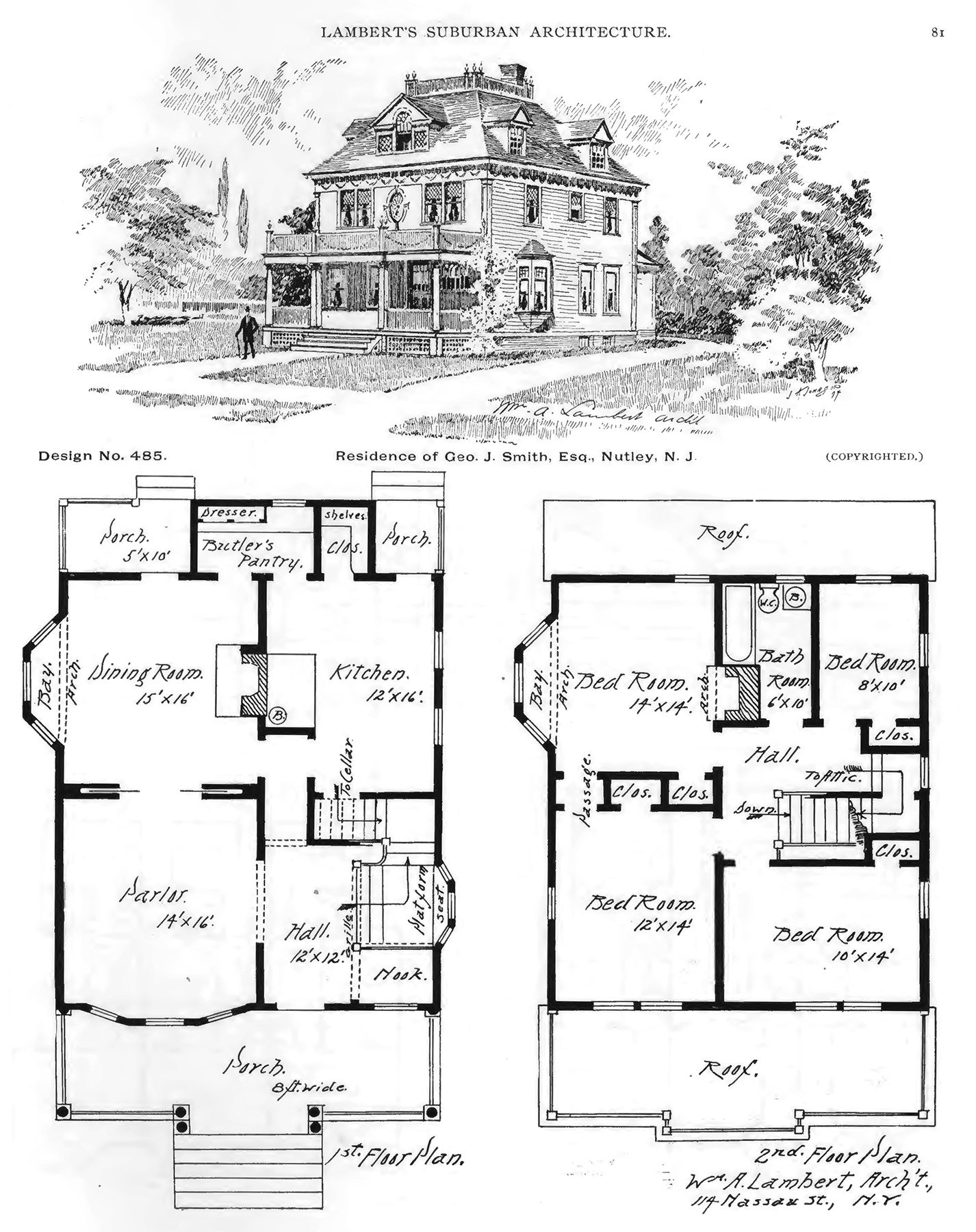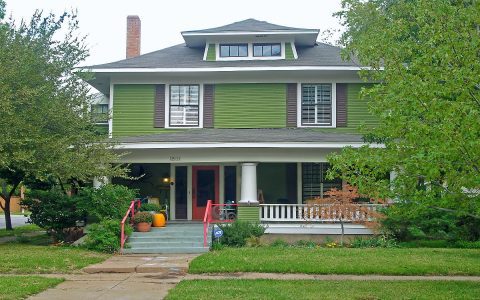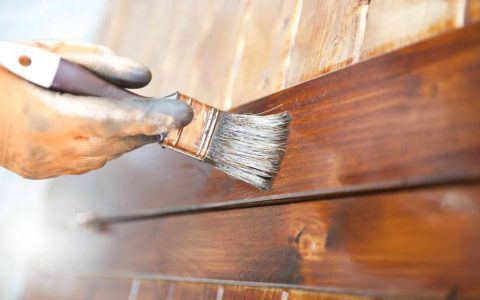American Foursquare house plans are characterized by their simple, boxy, two-story (often two-and-a-half story) design, popular from the mid-1890s to the late 1930s. These homes offered a practical and spacious alternative to Victorian-era complexities, often built in urban and suburban neighborhoods.
Key Exterior Characteristics
- Shape: A distinct square or nearly square footprint, providing a robust and economical structure.
- Roof: Typically a low-hipped or pyramidal roof, often featuring a large central dormer or multiple smaller dormers providing light and space to the attic.
- Porch: A wide, full-width front porch is a signature element, often with simple, substantial columns or piers.
- Windows: Large windows, frequently arranged in groups, allow for ample natural light. Double-hung sash windows are common.
- Symmetry: The facade often presents a symmetrical or nearly symmetrical appearance, although variations exist.
- Materials: Common siding materials include wood clapboard, shingles, brick, or stucco, sometimes used in combination.
- Minimal Ornamentation: Compared to Victorian styles, Foursquares are relatively plain, though they can incorporate elements from Prairie, Craftsman, or Colonial Revival styles.
Typical Interior Layout
The interior layout of an American Foursquare is known for its efficiency and practicality, typically featuring a four-room-over-four-room plan.
- Main Floor: Usually consists of an entry hall with a staircase, a living room, a dining room, and a kitchen. These rooms are generally large and well-proportioned.
- Second Floor: Commonly contains three to four bedrooms and at least one bathroom, all accessible from a central hallway.
- Staircase: The staircase is often a prominent interior feature, typically located in a corner of the entry hall or centrally.
- Attic and Basement: Most Foursquares include a full basement and a usable attic space, providing additional storage or potential living area.
Advantages of Foursquare Plans
- Efficient Use of Space: The square footprint maximizes interior living space on smaller lots.
- Natural Light: Large, strategically placed windows ensure bright interiors.
- Adaptability: The simple, open layouts are easily adaptable to modern living and renovations.
- Cost-Effective Construction: The straightforward design was relatively economical to build.
- Durability: Built with solid construction techniques and materials, many Foursquares have stood the test of time.
Design Influences and Variations
While fundamentally practical, American Foursquare plans could incorporate stylistic details from contemporaneous architectural movements:

- Prairie Style: Low-pitched hipped roofs, wide eaves, and horizontal lines.
- Craftsman: Exposed rafter tails, tapered porch columns, and natural materials.
- Colonial Revival: Symmetrical facades, classical columns, and multi-pane windows.
These influences often appeared in porch details, window styles, and interior woodwork, allowing for personalization within the basic Foursquare form.








